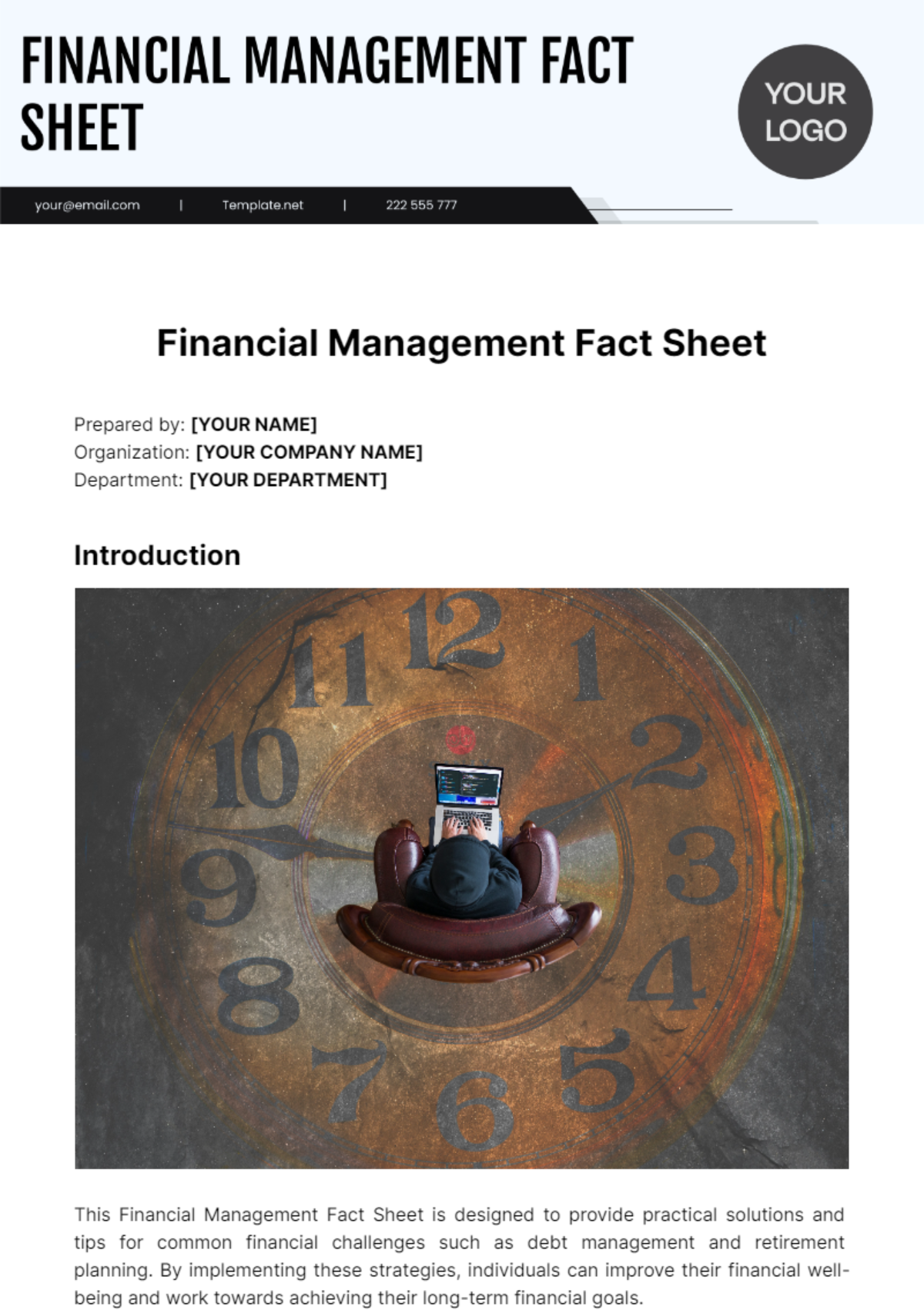Free Financial Management Fact Sheet

Prepared by: [YOUR NAME]
Organization: [YOUR COMPANY NAME]
Department: [YOUR DEPARTMENT]
Introduction

This Financial Management Fact Sheet is designed to provide practical solutions and tips for common financial challenges such as debt management and retirement planning. By implementing these strategies, individuals can improve their financial well-being and work towards achieving their long-term financial goals.
1. Debt Management
Understanding Debt
Type of Debt | Description | Tips |
|---|---|---|
Credit Card Debt | High-interest debt from credit card balances. | Pay off high-interest debt first. Consider balance transfers to lower-interest cards. |
Student Loans | Loans taken for education expenses. | Explore income-driven repayment plans. Make extra payments when possible. |
Mortgage Debt | Home loan repayments. | Refinance for lower interest rates. Consider biweekly payments to accelerate payoff. |
1.1 Debt Repayment Strategies
Snowball Method: Pay off the smallest debts first to gain momentum.
Avalanche Method: Prioritize debts with the highest interest rates first.
2. Retirement Planning
2.1 Retirement Savings Vehicles
Type of Account | Description | Tips |
|---|---|---|
401(k) | Employer-sponsored retirement plan. | Contribute at least enough to get the full employer match. Utilize tax-deferred growth. |
IRA (Individual Retirement Account) | Personal retirement account. | Choose between Traditional and Roth IRAs based on tax preferences. Maximize contributions annually. |
2.2 Retirement Planning Tips
Start saving early to benefit from compound interest.
Regularly review and adjust investment allocations based on age and risk tolerance.
3. Financial Goal Setting
3.1 Key Steps for Goal Setting
Define Goals: Identify specific financial objectives (e.g., buying a home, funding education, retiring comfortably).
Set Realistic Targets: Break down goals into manageable steps with timelines.
Create a Budget: Allocate funds towards goals and track progress regularly.
Automate Savings: Use automatic transfers to designated savings accounts.
4. Emergency Fund Planning
4.1 Importance of an Emergency Fund
Provides financial security during unexpected events like job loss or medical emergencies.
Aim to save 3-6 months' worth of living expenses in an easily accessible account.
4.2 Building an Emergency Fund
Set aside a portion of income each month until the target amount is reached.
Consider high-yield savings accounts for better returns on savings.
Conclusion

Managing finances effectively requires a proactive approach towards debt management, retirement planning, goal setting, and emergency fund preparation. By implementing the strategies outlined in this Fact Sheet, individuals can take control of their financial future and work towards achieving financial stability and security.
For personalized financial advice, consult with a qualified financial advisor.
- 100% Customizable, free editor
- Access 1 Million+ Templates, photo’s & graphics
- Download or share as a template
- Click and replace photos, graphics, text, backgrounds
- Resize, crop, AI write & more
- Access advanced editor
Explore the Financial Management Fact Sheet Template on Template.net for streamlined financial planning. This editable and customizable template simplifies financial management tasks, allowing you to tailor content to specific needs. Compatible with our Ai Editor Tool, personalize your fact sheets effortlessly. Streamline your financial documentation with this user-friendly template, ensuring precise and tailored financial planning and analysis with ease.





























